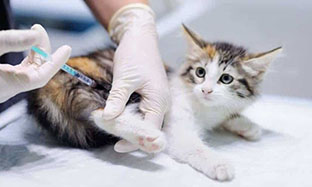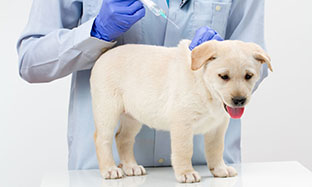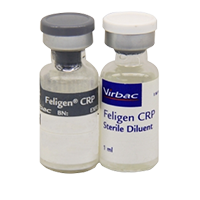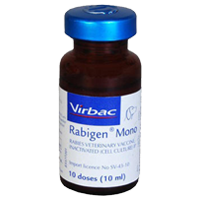
Help protect your cat against harmful diseases
Help protect your cat against harmful diseases
Diseases that can be protected against with vaccination:
- A complex disease
- Caused by one of two and sometimes both, Feline Calicivirus and Feline Herpes Virus (Rhinotracheitis)
- Highly common and contagious
How it’s spread
- Through direct contact with saliva, discharge from the eyes and nose
- It’s common in multi-cat households since it is so easily spread from cats coughing, sneezing and grooming each other
- These viruses lay dormant in recovered cats and kittens for several years (and possibly for life), during which time those cats can spread the virus into the environment and infect other cats
Symptoms
- Lethargy, sneezing, fever, runny eyes and nose
- Secondary bacterial infections may also cause complications. In young kittens more susceptible to infection, severe respiratory disease associated with pneumonia may develop and be fatal
- Highly contagious
- Affects cats of all ages
- Most severe in cats less than 12 months of age
How it’s spread
- By direct contact with infected cats as the disease can be passed on through body secretions, particularly faeces
- Through an infected cat’s litter tray, bedding, food bowls and grooming
- From infected queens to their kittens during pregnancy, causing stillbirths or kittens with coordination issues and other abnormalities
- May be spread through infected cat for up to 6 weeks and persist in the environment for up to 1 year following infection
Symptoms
- Depression, loss of appetite, vomiting, abdominal pain and frequent bloody diarrhoea
- Severe dehydration due to persistent diarrhoea and even death can occur, particularly in kittens
- Less common but very serious
- Kittens younger than 8 weeks are the most susceptible with the exception of those born to immunised mothers
How it’s spread
- By mutual grooming, fighting, sneezing or communal feed bowls/toys
- From infected queens to their kittens during pregnancy and through their milk
- Following exposure some cats are able to mount an immune response and eliminate the virus, however some cats can remain persistently infected and release the virus in secretions including saliva, tears, urine and nasal discharge
Symptoms
- Loss of appetite, weight loss, anaemia, vomiting, diarrhoea, reproductive problems, infections, tumours, depression and lethargy
- Suppression of the immune system, potentially resulting in secondary disease
- Death (mostly due to the severe immune suppression and development of secondary diseases) can occur as quickly as 3 months or take as long as 3 years
Take a look at our best cat food range.




